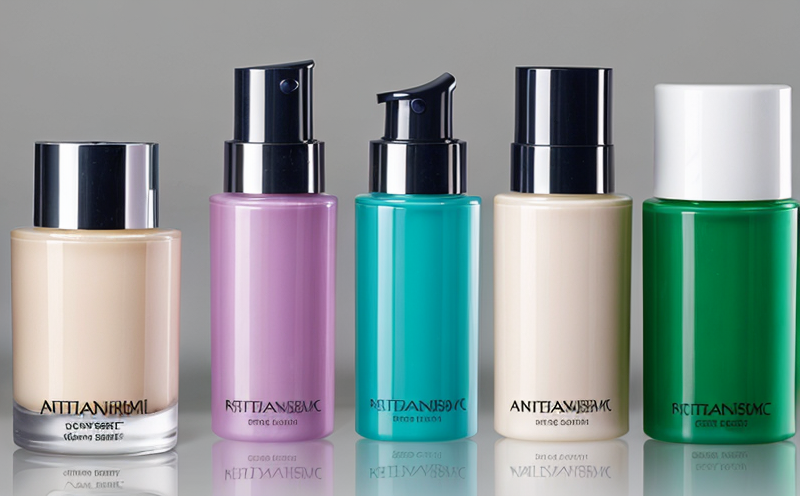Preservative Challenge Testing for Eye Area Products
In the cosmetics industry, preservatives are critical components that prevent microbial contamination, ensuring product safety and shelf life. For eye area products such as mascara, eyeliner, or eyeshadow, stringent regulatory requirements demand rigorous testing to ensure that these formulations are safe and effective.
Preservative challenge tests specifically evaluate the efficacy of preservatives in preventing microbial growth under accelerated conditions. This test is particularly important for the eye area because even minor contamination can lead to severe infections like conjunctivitis or keratitis, which could be life-threatening if left untreated. The FDA and other regulatory bodies mandate that preservatives used in cosmetics must demonstrate their effectiveness against a range of microorganisms.
The testing process involves inoculating the product with various microbial strains (such as bacteria like Pseudomonas aeruginosa or fungi like Candida albicans) under controlled conditions. These conditions are designed to mimic real-world scenarios but at an accelerated rate, allowing for faster results. The products are then incubated over several days, and the presence of viable microorganisms is carefully monitored.
The challenge test protocol typically involves multiple steps:
- Inoculation with a standardized microbial inoculum
- Incubation at controlled temperatures (e.g., 25°C, 30°C, and 45°C)
- Observation for visible signs of contamination or growth
- Quantitative analysis using methods like ATP bioluminescence to detect microbial activity
The results are compared against control samples without preservatives. If the product passes, it demonstrates that the chosen preservative system is effective at inhibiting microbial growth.
This testing method ensures compliance with international standards such as ISO 22716:2011 for cosmetic products and US FDA regulations. The test results are crucial not only for regulatory approval but also to safeguard consumer health and enhance brand reputation.
Why Choose This Test
Selecting the right preservative is a critical decision in cosmetic formulation, especially for products intended for sensitive areas like the eye. Here are several reasons why preservative challenge testing should be prioritized:
- Regulatory Compliance: Ensures adherence to FDA and ISO standards.
- Informed Decision-Making: Provides data on preservative efficacy, guiding R&D efforts towards safer formulations.
- Risk Mitigation: Reduces the risk of microbial contamination that could lead to serious infections.
- Consumer Trust: Builds confidence in product safety and quality.
The test is not just a formality; it’s an essential step in ensuring the highest standards of hygiene and safety. By investing in this testing, companies can ensure that their products meet rigorous global standards and provide consumers with peace of mind.
Quality and Reliability Assurance
- Standard Operating Procedures (SOPs): Strict adherence to established protocols ensures consistent results.
- Qualified Personnel: Trained professionals conducting the tests ensure accuracy and reliability.
- Advanced Equipment: Use of sophisticated instruments for microbial detection enhances precision.
The testing laboratory must maintain a clean, controlled environment to prevent contamination. This includes using Class 100 laminar flow hoods for handling samples and employing validated methods for both inoculation and measurement of microbial growth. The use of ATP bioluminescence technology provides quantitative data on the presence of viable microorganisms.
Quality assurance also involves regular calibration of equipment, validation of test protocols, and documentation of all procedures to ensure reproducibility. This comprehensive approach ensures that every batch tested is evaluated under consistent conditions, leading to reliable results.
Competitive Advantage and Market Impact
The preservative challenge test plays a pivotal role in differentiating products within the competitive cosmetics market. Consumers are becoming increasingly health-conscious, and the demand for safe and effective cosmetic products is growing. By implementing this rigorous testing process, companies can:
- Ensure compliance with stringent regulatory standards.
- Increase consumer trust and loyalty.
- Enhance brand reputation through transparent manufacturing practices.
- Avoid costly recalls and associated negative publicity.
The results of the preservative challenge test can be leveraged in marketing campaigns to highlight product safety. This not only attracts health-conscious consumers but also strengthens market position against competitors who may not adhere to such stringent testing protocols.





